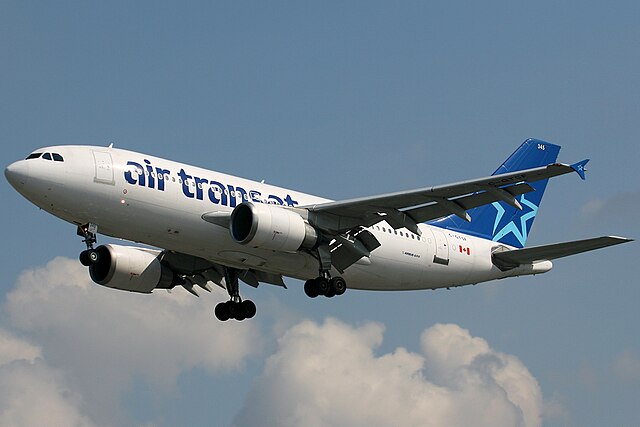The Airbus A310 is a wide-body aircraft, designed and manufactured by Airbus Industrie, then a consortium of European aerospace manufacturers.
Airbus had identified a demand for an aircraft smaller than the A300, the first twin-jet wide-body. On 7 July 1978, the A310 was launched with orders from Swissair and Lufthansa. On 3 April 1982, the first prototype conducted its maiden flight, and the A310 received its type certificate on 11 March 1983.
Airbus A310
The A310 (background) is a shrunken version of the Airbus A300 (foreground)
The A310-200 prototype, featuring the liveries of Swissair (left) and Lufthansa (right), the first customers.
In 1988, an A310 was delivered to Interflug: the first Airbus for an Eastern-bloc airline.
A wide-body aircraft, also known as a twin-aisle aircraft and in the largest cases as a jumbo jet, is an airliner with a fuselage wide enough to accommodate two passenger aisles with seven or more seats abreast. The typical fuselage diameter is 5 to 6 m. In the typical wide-body economy cabin, passengers are seated seven to ten abreast, allowing a total capacity of 200 to 850 passengers. Seven-abreast aircraft typically seat 160 to 260 passengers, eight-abreast 250 to 380, nine- and ten-abreast 350 to 480. The largest wide-body aircraft are over 6 m (20 ft) wide, and can accommodate up to eleven passengers abreast in high-density configurations.
A narrow-body Boeing 737 of Lufthansa in front of a wide-body Boeing 777 of Emirates
A Boeing 747, the first wide-body passenger aircraft, operated by Pan Am, its launch customer
Three widebodies: KLM's Airbus A330 twinjet, McDonnell Douglas MD-11 trijet and Boeing 747-400 quadjet
An Airbus A300's cross-section, showing cargo, passenger, and overhead areas








